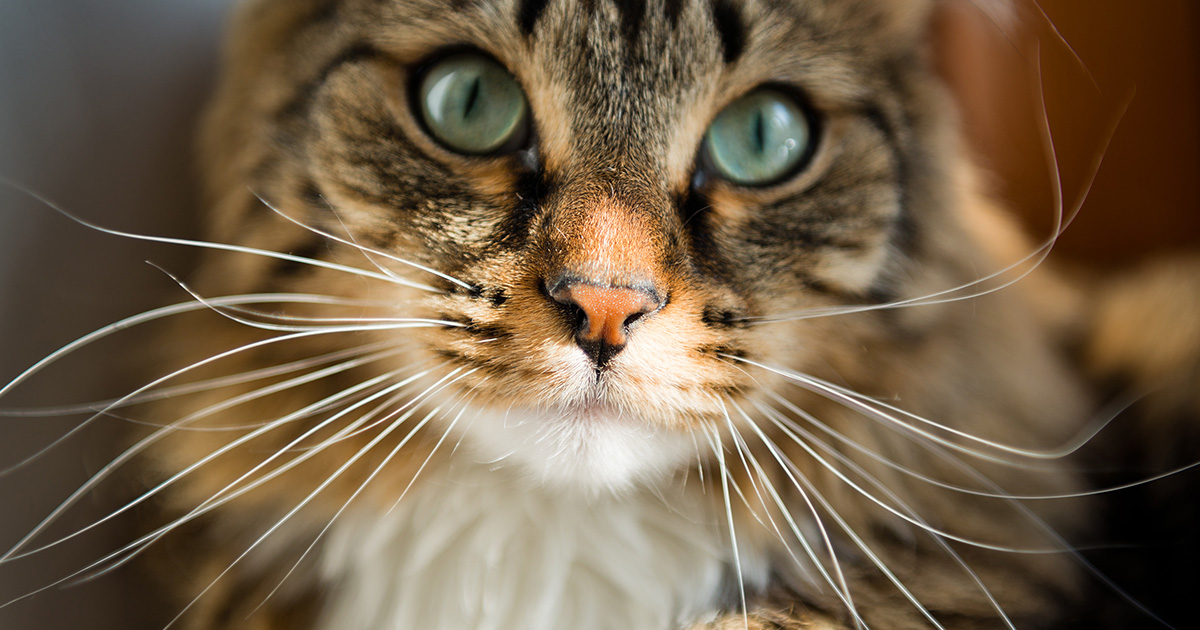Welcome to another installment of “Debarking Pet Myths,” our monthly series that addresses common myths, misconceptions and old wives’ tales about dogs, cats and their nutrition.
All cats (and dogs) have whiskers on different parts of their faces — it adds to their cuteness, for sure. But what do they actually do? Some people believe whiskers help cats balance, but is that true?
What Are Whiskers?
Contrary to the balancing belief, your cat’s whiskers (also called vibrissae) do not have super-stabilizing powers. They’re just plain old hair. What does make them special is not the whiskers themselves, but what the whisker follicles are surrounded by — sensory receptors. These specialized receptors help your cat understand their environment by transmitting whisker movement to the brain. The brain can then interpret if objects are near your cat and even if there are air movement changes.
Feeling Out Their Environment
Whiskers help your cat’s spatial awareness, particularly in the dark. Think of your cat’s whiskers as having a function similar to our hands when we instinctively put them out in front of us while we’re walking in the dark. They stop your cat from running into things by sensing what is around them. Cats can also notice if something is moving around them (like a predator) by their whiskers detecting changes in air movement.
There are also receptors surrounding the whisker follicles that can help your cat know whether they are the right way up or upside down. These proprioceptor cells use gravity’s effect on your cat’s whiskers to know their orientation — if gravity is pulling their whiskers down, then your cat (or at least their head) must be the right way up. Knowing how to land on their feet from a fall takes a lot more coordination than just whisker-sensing though.
Navigating Small Spaces
Whiskers also act like a built-in tape measure for your cat and can help them decide whether they can fit through a small space or not. By testing out the space with their whiskers first, hopefully they can prevent a “what have I got myself into” (literally) situation.
Cutting a Cat’s Whiskers Is Senseless
Whiskers are made of keratin (the same as hair). So even though cutting whiskers doesn’t hurt your cat, their whiskers should never be cut unless there is a medical reason for it. Whiskers are so important for cats to sense and understand their environment that cutting them can be disorienting and cause them significant stress. Confused and uncoordinated movements from cutting whiskers may be where the balance myth came from.
While whiskers aren’t responsible for keeping a cat’s balance, they are very important for helping them navigate their environment. So enjoy looking at your cat’s twitching whiskers, but don’t cut them — unless your veterinarian needs to for medical reasons, of course.

RELATED POST: High-Wire Kitty: Why Do Cats Have Such Amazing Balance?







